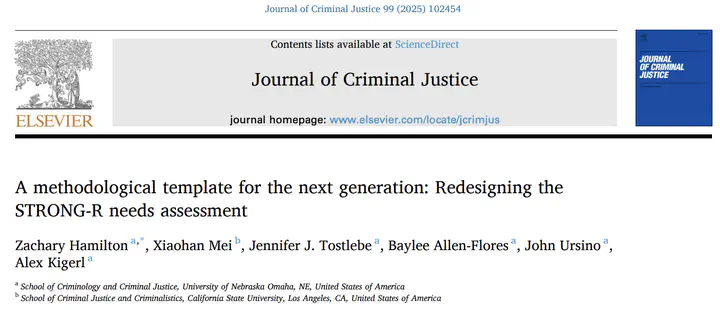
Abstract
Andrews and colleagues (1999) development of the Risk-Need-Responsivity model was a watershed moment for the field. As a result, Risk-Needs Assessments (RNAs) were shaped to identify needs domains, in which sub-scale scores are used to guide program-matching. Yet, despite ubiquitous use, needs assessments are an afterthought in RNA development, failing to demonstrate evidence and support for widespread application. Using 111,731 reentrants assessed via the Static Risk Offender Needs Guide–Revised (STRONG-R), we redesigned the needs assessment and establish construct validity via exploratory, confirmatory, multi-group confirmatory factor analysis, correlation, receiver operating characteristics, and regression techniques. Five multi-dimensional dynamic domains and a Global Needs Factor are established, demonstrating gender and race/ethnicity measurement invariance, moderate recidivism prediction accuracy, and relative gender and race/ethnicity parity. In addition to strong findings, we provide step-by-step instructions for the (re)development and validation of correctional needs assessments. Policy implications discus the importance of evaluating and updating current RNAs.